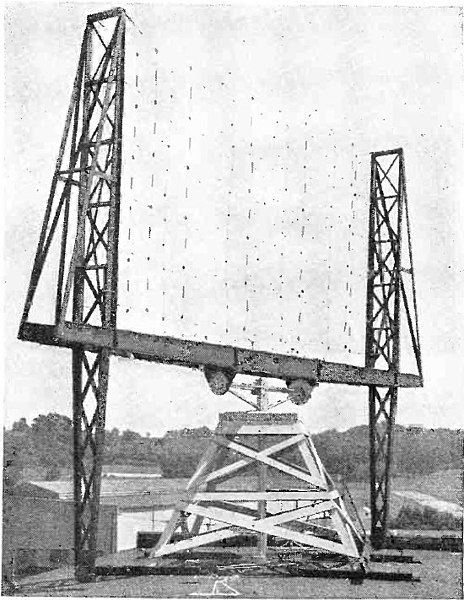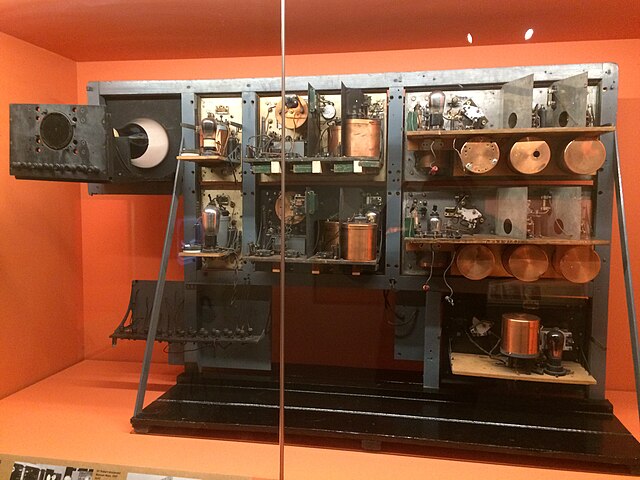Weather radar, also called weather surveillance radar (WSR) and Doppler weather radar, is a type of radar used to locate precipitation, calculate its motion, and estimate its type. Modern weather radars are mostly pulse-Doppler radars, capable of detecting the motion of rain droplets in addition to the intensity of the precipitation. Both types of data can be analyzed to determine the structure of storms and their potential to cause severe weather.
Weather radar in Norman, Oklahoma with rainshaft
Weather (WF44) radar dish
Typhoon Cobra as seen on a ship's radar screen in December 1944.
1960s radar technology detected tornado producing supercells over the Minneapolis-Saint Paul metropolitan area.
Radar is a system that uses radio waves to determine the distance (ranging), direction, and radial velocity of objects relative to the site. It is a radiodetermination method used to detect and track aircraft, ships, spacecraft, guided missiles, motor vehicles, map weather formations, and terrain.
Long-range radar antenna, used to track space objects and ballistic missiles
Radar of the type used for detection of aircraft. It rotates steadily, sweeping the airspace with a narrow beam.
Experimental radar antenna, US Naval Research Laboratory, Anacostia, D. C., from the late 1930s (photo taken in 1945)
The first workable unit built by Robert Watson-Watt and his team








